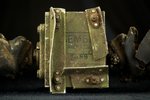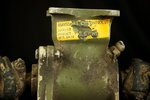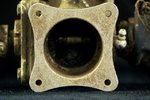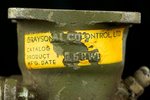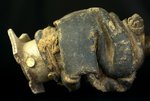Hello,
I have just taken these photos of a mechanical part from a Flying fortress that crashed in South Sweden on June 21, 1944, and I would be very thankful if someone could help me with identifying what type of mechanical part it is.
I have just taken these photos of a mechanical part from a Flying fortress that crashed in South Sweden on June 21, 1944, and I would be very thankful if someone could help me with identifying what type of mechanical part it is.



